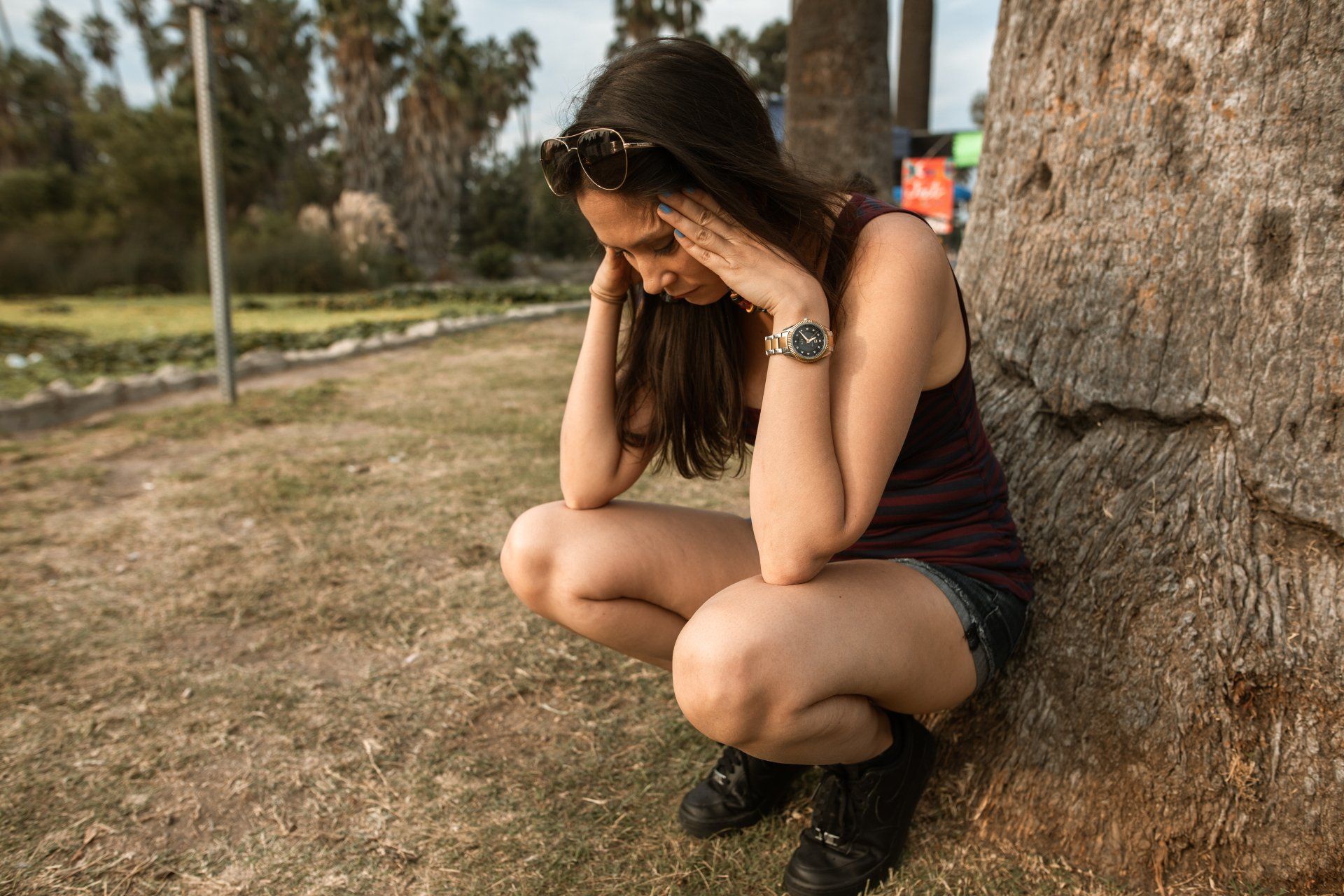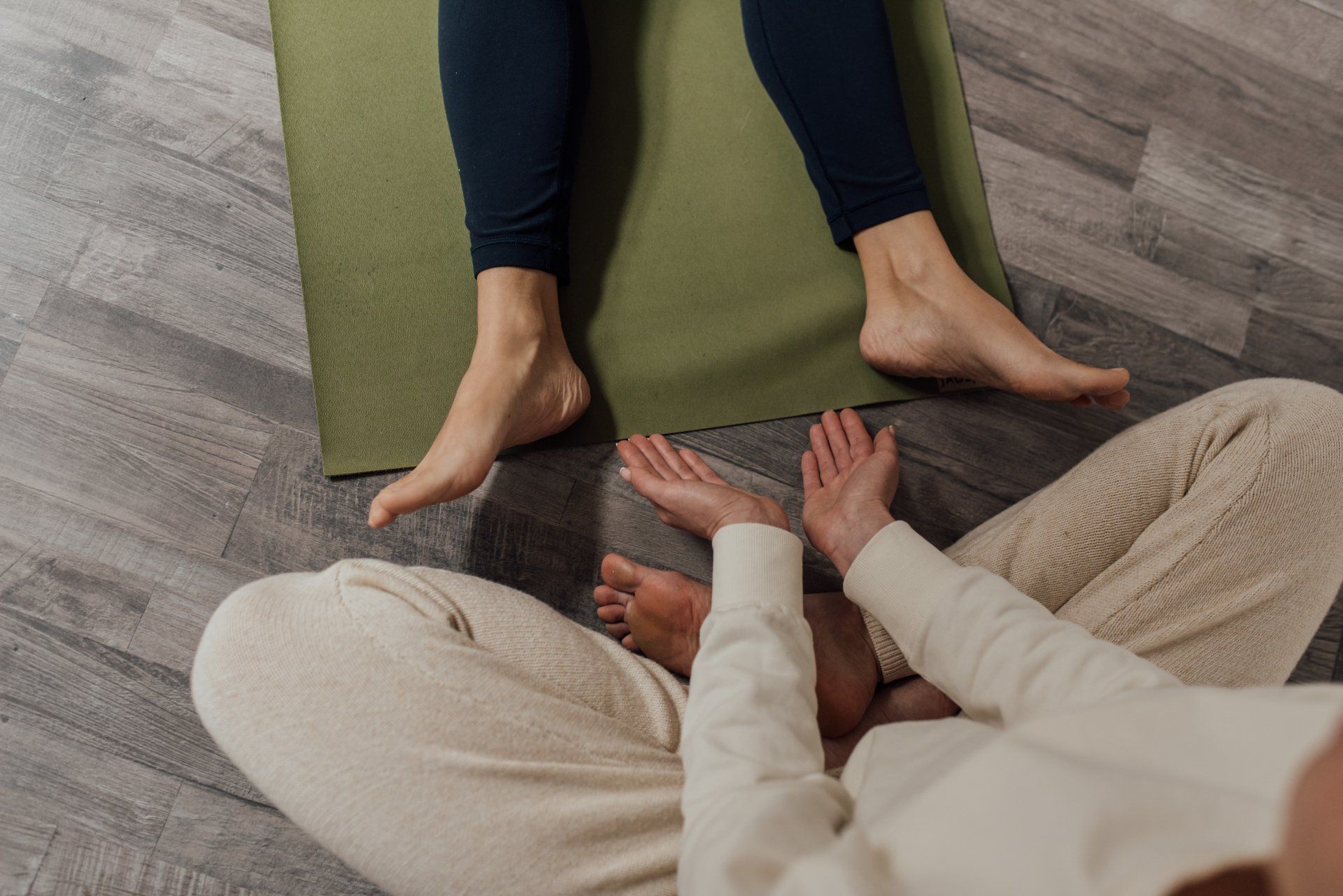Eating Disorder Coaching, Personalized Yoga and Reiki Healing
Bedtime Yoga: Benefits and poses to try
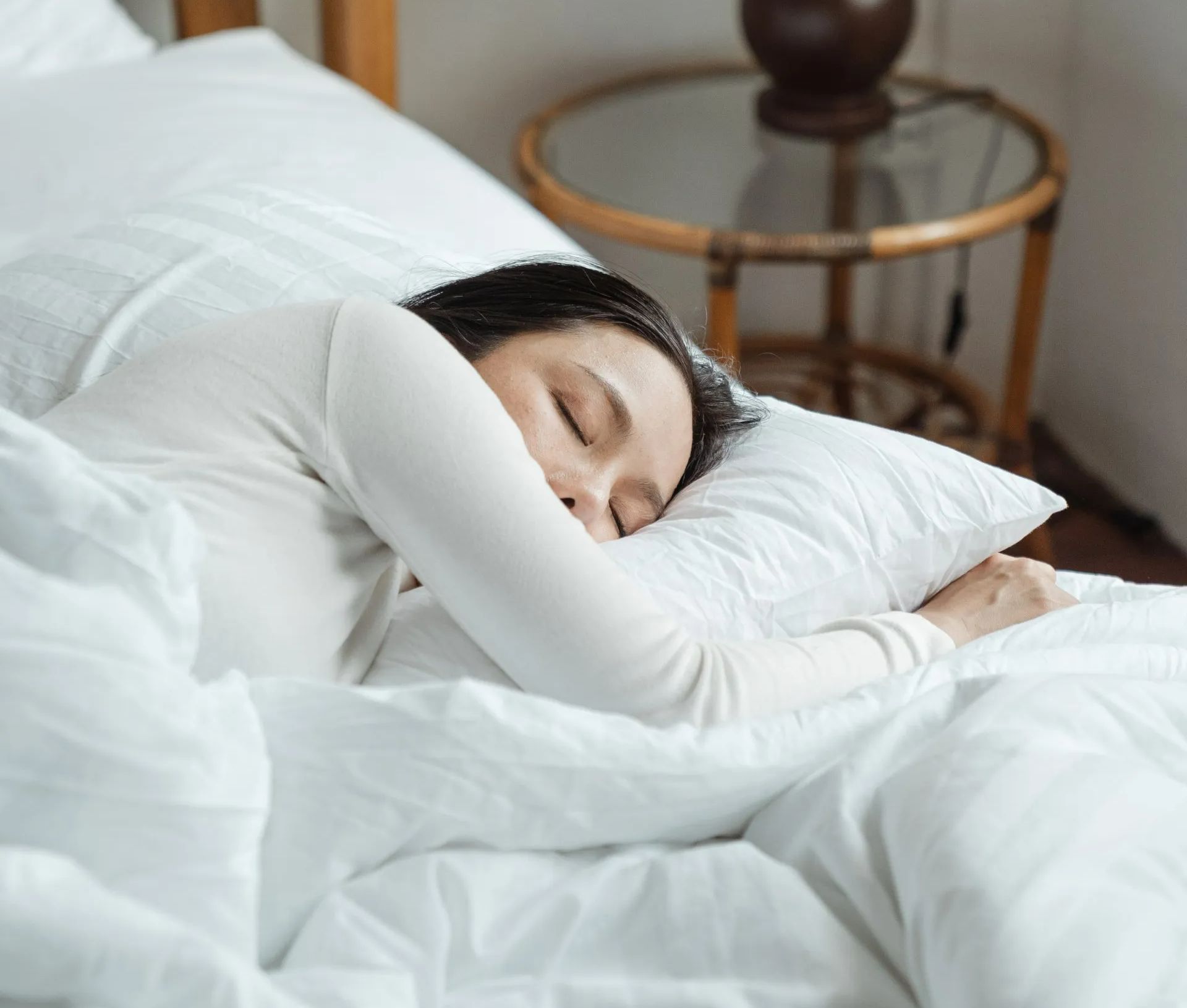
Getting a good night's sleep is so important to your physical and mental health. However, getting quality sleep is becoming more difficult in today's busy world. According to a recent CDC survey, 14.5% of adults experience trouble feeling or staying asleep most days or every day. Incorporating yoga into your nighttime routine can help enhance sleep quality and duration. Yoga for sleeping can help people who sleep poorly or suffer from insomnia.
I am a certified yoga instructor who struggles with sleep problems. After experimenting with lots of options to help improve my sleep, I have found that gentle yoga and breathing techniques are the most effective for going and staying asleep. Keep reading to find out more about how a regular yoga practice can help improve your sleep too.
Why practice yoga for sleep?
Many yogis enjoy a morning practice to wake up and invigorate their bodies. But yoga can also help you wind down in the evening and prepare for rest. Studies show that 55% of people who practice yoga regularly report better sleep quality. There are several reasons why practicing yoga helps to improve sleep. Here are a few:
- The slow, controlled breaching techniques used in many yoga practices stimulates your vagus nerve. This nerve is a part of your parasympathetic nervous system and controls your body's rest and digest function. Stimulating it tells your body it is time to relax and to conserve your energy for your next activity.
- Do you ever feel your heart pounding in your chest while you're trying to rest? A regular yoga practice helps to improve blood flow and lower your heart rate, physically reducing stress levels.
- Yoga poses help to stretch and relax your muscles. They also stimulate and stretch your fascia, the connective tissues that wrap around your muscles and organs. In addition to reducing muscle and fascia tension, the physical relaxation can translate to better sleep.
- Yoga also increases levels of melatonin in the body. Melatonin is a hormone that helps with your circadian rhythms and tells your body it is time for rest. It also helps you stay asleep throughout the night.
When should I practice yoga to improve my sleep?
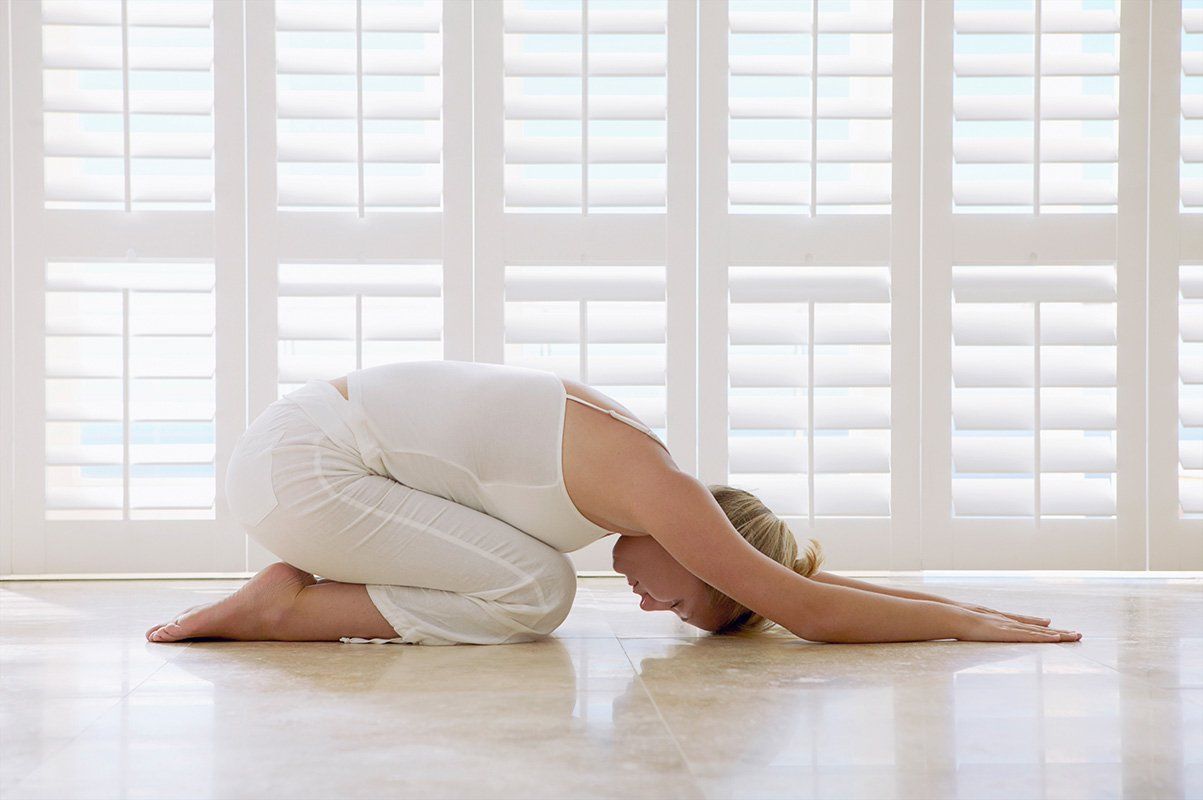
Practicing yoga any time during the day can help with stress relief and better sleep. Most yogis find it best to practice in the evening or even immediately before bed to realize the greatest benefits. There are several styles of yoga that can even be practiced in bed, such as yin yoga, restorative yoga, and Yoga Nidra.
If you aren't practicing in bed, make sure you find a quiet place for your practice, with gentle lighting. Try to remove any distractions so that you can focus on relaxing your body and breath. Keep a glass of water handy in case you feel thirsty, and wear comfortable clothing that you can move in.
Which style of yoga is best for sleep?
There are a variety of different styles of yoga, and choosing the right style is important. Your bedtime yoga routine should include gentle stretches with longer holds in a non-heated space. A practice where you are mostly seated or reclined is better than a more active, standing sequence.
Yin and restorative yoga are slower moving practices that offer a variety of shapes that can help relax your body and mind for sleep. Yoga Nidra is a more meditative style of yoga that helps you access the brainwaves you experience during sleep and can often help to lull you to sleep. Some yogis like to start with some yin or restorative poses to relax their bodies, and then move into a Yoga Nidra meditation.
What do I need for my practice?
All you really need to practice yoga is a quiet and comfortable spot for your bedtime yoga practice. In order to feel supported and comfortable throughout your practice, I recommend having the following props available:
- A yoga mat: a yoga mat will give you a soft place to practice and support your joints. If you are practicing on carpet, a towel will also work.
- A bolster: a bolster is basically a long pillow that we use to support our body during forward folds and other yoga postures. If you do not have a bolster, you can also use a pillow or a rolled-up blanket or towel.
- A blanket: a blanket offers soft support for seated positions. It can be rolled into a bolster (see above), placed underneath your head for a makeshift pillow, and used for warmth.
- Water: hydration is important to your overall health, it also helps you sleep. If you find yourself waking up during the night to sip on water, try incorporating some fluids into your yin yoga practice to stay hydrated throughout the night. But don't overdo it: you don't want to be up every few hours to use the restroom!
What yoga poses are best for when you can't sleep?
Here are my five favorite yoga poses to help you fall asleep faster and sleep longer. Hold each pose for 5 to 7 minutes while breathing deeply for the best benefits:
- Balasanana (wide knee child's pose): From tabletop, bring your knees wider than your hips and your feet together. Relax your hips towards your heels and stretch your arms froward as you melt your heart towards your yoga mat. You can place a folded blanket under your hips, heart, or forehead for additional support in this shape. Child's pose is a very grounding, internal pose that also stretches your shoulders, spine, and back. Try swaying your head from side to side to massage your third eye and relax your nervous system in this shape.
- Half frog: From child's pose, come to lying prone on your belly. Now, cactus your right arm and bring your right knee to a 90 degree bend so that elbow and knee rest on the ground. You can keep your left forearm under your head or rest it by your side. Half frog is a gentle heart and hip stretch that mimics the way some of us sleep. Hold this side for 3 or 4 minutes and then move to the other side by resting with both legs straight, then bending your left elbow and left knee into your 90 degree bend.
- Supta baddha konasana (reclining bound angle pose): Lift up into a seated position from half frog. Sit with your feet together and your knees out wide, and slowly lean back onto your back. You can either lie flat or bring a bolster under your upper body to stretch your chest and shoulders. Keep your arms relaxed by your sides or place them on your torso. If this shape feels intense in your hip flexors, support your knees with blankets. Bound angle pose is a gentle heart and hip opener that also offers a nice back release.
- Legs up the wall pose: Remove any props that were supporting you in supta baddha konasana and return to lying on your back. Pull your knees into your chest and then bring your legs extended towards the ceiling of your space. You can rest your hands on your torso, bring them by your sides, or use them to help hold your legs up. If this shape feels like too much of a hamstring stretch, you can also practice it with your knees bent. Legs up the wall is a super relaxing pose that is great for foot health and calming an active mind.
- Savasana (corpse pose): Corpse pose is often the final pose of a yoga practice. Simply relax on your back, or in whatever position feels calming to your body. Breathe deeply as you encourage your entire body to rest and relax. You can stay here for as long as you'd like, and you might even find that the relaxation response offered from your practice causes you find some sleep in this shape. Savasana is also a great shape for practicing Yoga Nidra
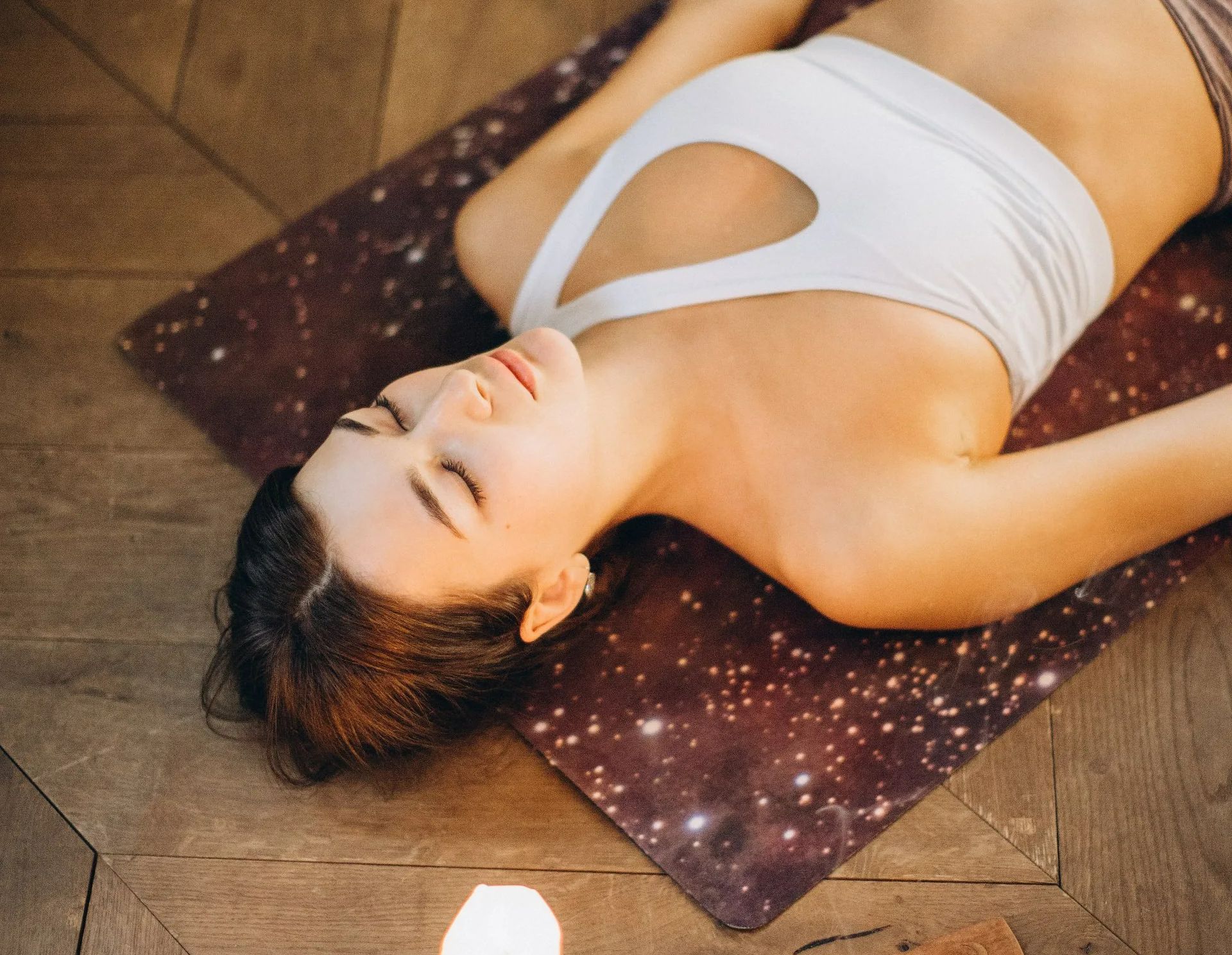
How do I learn more?
If you are interested in learning more about how yoga can help you with sleep or to improve the general quality of your life, I offer variety of resources for you to check out:
- Try my Tuck Me In Yin class, which highlights the above shapes plus a seated forward bend to help you fall asleep quicker.
- Listen to a Yoga Nidra meditation to relax your body and mind and improve your sleep quality.
- If you have trouble falling asleep after waking in the middle of the night, try this Progressive Muscle Relaxation meditation to get back to sleep faster.
If you are interested in developing a long-term yoga practice, I offer in person and remote private yoga, which can be customized to your day to day needs. If you are interested in learning more, you can hop over to my yoga page, or email me to learn more.
